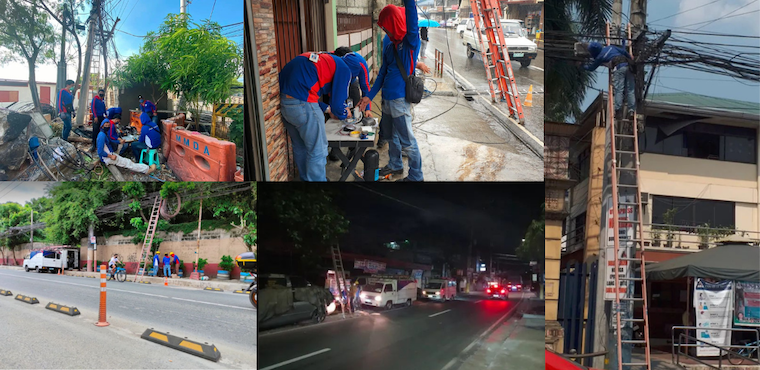Fiber internet connections are more available nowadays. Not to mention the prices are lower while the speeds are faster. While it’s easy to want a fiber connection based on the advertised plans, you should consider other factors that might affect your experience as well as to manage your expectations. Here are things to consider before getting a fiber internet connection.
What ISPs are available in my area?

The first thing you need to check is which internet service provider is available in your area so you can check your options. It’s usually the big four: PLDT, Globe, Converge, and SKY Fiber. It makes no sense to want a specific provider when your area is not serviceable. If you live in a condominium, chances are there would be one option available. If you live in a subdivision that is yet to be serviced by a specific ISP, the homeowners association can reach out to the ISP’s office and file an application.
If you live in provinces, you might want to keep an eye out on regional ISPs as well to widen your options. You can read about some of them here.
Are they experiencing problems in my area?

Just because they’re available, doesn’t mean the service is perfect. All ISPs have their moments of slowdowns and downtimes. And in some cases, certain ISPs are problematic in certain areas. Talk to neighbors who have already subscribed and ask about their experience. Ask them if they’re getting their subscribed speed and if it’s consistent. Ask about the quality of customer service and how ISPs respond to complaints. If it’s mostly negative, then consider it a red flag.
What am I going to use it for?

Later on, you will see that there are a number of plans available per ISP and the options are there for a reason and that is to cater to different types of users. Knowing what you’ll use it for will help you decide later on which plan to choose because you want to make sure that the plan can cope with your needs but at the same time you don’t want to overspend on a bandwidth you won’t utilize.
As yourself, is it for browsing social media and watching YouTube or Netflix in HD? Is it for online schooling or work-from-home? Is it for gaming, downloading, and streaming video in 4K? How many people are going to use it? How many devices will be connecting to it?
Which plan can meet my needs?

If you know what ISP is available in your area and how you will utilize the connection, it’s time to look for a fiber plan that can meet your needs. Some would say to choose a plan that fits your budget, but in this case, we would consider that as a second priority since, as mentioned earlier, we want to have the best internet experience possible without overpaying. Then again, it’s good to get a plan with the highest speed at the lowest price.
If you’re the only user, and just going to use it for Facebook and HD streaming on YouTube and Netflix, and online mobile gaming, then you don’t need a 300 Mbps plan. A 30 Mbps plan should do it.
If there are multiple users who plan to watch Netflix in 4K, use it for work from home or online schooling, or for downloading games online, going for at least 150 Mbps will do it.
There are multiple scenarios that can be imagined and it varies per household, but always make sure to choose the minimum speed that will allow you to do your tasks. The last thing you want is getting stressed about disconnected Zoom calls because someone else is watching YouTube. From there, you can scale up or scale down on your options.
If there’s a constraint because of the budget, then you’ll have to scale down on your needs (no 4K streaming in the meantime) until you can afford a higher plan. You can always upgrade in the future.
You can compare fiber plans here.
Do I need add-ons?

When you submit your application for a plan, you’ll likely encounter add-ons either through the application process or when customer service reaches out to you. These could be speed boosts or mesh routers or high-end gaming routers. For the former, you can consider speed boosts if you want to maximize or stretch your budget. For the latter, you’ll need to look back on the previous question, which is how you will use the internet connection.
When you subscribe to a plan, your ISP will provide you with a stock router and they’re not really that good when it comes to delivering the maximum speed of your subscribed plan, especially via WiFi. If you’re subscribed to 20/30/50 Mbps, the stock router should be enough, but if you have a faster plan, you might consider getting a better router. If your devices support WiFi 6, then better get a router that supports it so you can maximize the speed of your connection.
As for the mesh system, this will come in handy if you have a big place and want to eliminate dead spots. Otherwise, a single powerful router should be enough.
Take note that you’re not required to take the add-on deal from the ISP. You can buy it separately from a gadget store. But getting it from the ISP should help as they offer it in installments and they’ll just add a fee on top of your monthly payment.
The gist of all of this is to know your needs and know as much as possible from your ISP. The more you know, the more likely it is that you’ll end up with a good plan that is right for you. And we hope these questions can help you get started. Happy hunting!
Source: Yugatech

No comments:
Post a Comment